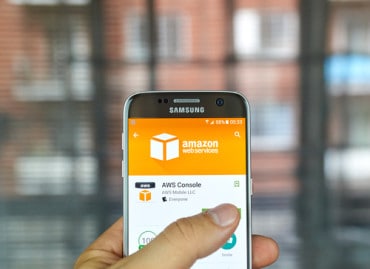
In addition to better serving customers and helping integrate systems, a cloud-native application architecture lets retailers adopt new business models.
Fundamental forces are prompting retailers (both brick and mortar and eCommerce) to rethink their application architectures. Amazon has driven customer expectations on product availability, personalized recommendations, pricing, and delivery. Large retailers like Walmart are trying to counter with online stores, enhanced in-store services (e.g., personal shoppers), and expanded local delivery complemented with scheduled curbside pickup.
How can other retailers compete? Join them by selling products through their marketplaces? For some, that may be okay. But many retailers would rather not participate and remain independent. Accomplishing that requires an infrastructure that supports modern application development and one that can manage data and transactions at any scale.
Additionally, modern infrastructure must let a retailer address fast-changing consumer preferences, shifting demographics, and the growing importance of mobile. And it must be highly scalable, available, and responsive enough to meet the always-on, buy-anywhere expectations of today’s customers.
See also: How to Select a Database Infrastructure for Modern Global Retail Operations
A move to cloud
Many businesses, retailers included, are migrating their applications to the cloud. Such a move will cut capital expenditures for on-premises infrastructure and can offload many management tasks, but it doesn’t automatically provide the needed agility and scalability.
Increasingly, the choice to address such requirements is to develop cloud-native apps based on a microservices architecture that can be dynamically scaled. Microservices provide the loosely coupled application architecture, which enables deployment in highly distributed patterns. Containers allow processes and applications to be bundled and run. They can be used throughout an application’s life cycle from development to test to production.
A critical aspect of using a cloud-native architecture is its ability to develop applications that integrate different services, applications, and data sources. Existing apps and databases can be exposed, shared, and accessed via connectors or application programming interfaces (APIs). Performance and scalability can still be an issue.
A cloud-native environment must respond to change in real time. Such a response isn’t simply scaling up or down as needed. It’s also essential to respond to performance issues as close to real time as possible. Many companies making the move to the cloud encounter problems. Traditional data platforms were not designed for distributed environments in the cloud. Some may be able to scale as transaction volumes grow. But most break down as the complexity of new applications and services grows.
What’s needed is a highly scalable, cloud-native database solution that can deliver sustained transaction rates. It must also provide easy access to the transaction data for other purposes, including supporting new services and developing a more personalized customer experience. Scale and performance were concerns for Lush Fresh Handmade Cosmetics when looking for a distributed database to underpin its global inventory management platform. The CockroachDB solution chosen was ultra-resilient and minimized outages or downtime.
Enabling new applications and business models
A cloud-native infrastructure lets retailers quickly build new applications to react to changing customer and market conditions. That’s in contrast to the situation when monolithic applications are used. Changes to such applications require recoding and recompiling of the entire massive application. The process is much simpler using a cloud-native approach where different elements of an application are developed and run independently. Want to add a new data source? Use a new analytics algorithm? Tie in results or use features of a third-party application? All can more easily be done because cloud-native applications integrate multiple components into a larger application. Changes can be made to one element without impacting the others. The advantage of this approach is that retailers can quickly react to changes. For example, many retailers are building omnichannel customer engagement hubs. Such hubs offer personalized, contextual customer engagement, whether through a human or artificial agent (e.g., a website chatbot), across all interaction channels.
The key to success with such hubs is to organize information from distributed sources and get a 360-degree customer profile. It might also include leveraging new data sources and artificial intelligence to add predictive and real-time capabilities. A cloud-native architecture helps retailers integrate data and apps, supports the mix of any technologies (e.g., AI), breaks down silos, and more.
In addition to better serving customers and helping integrate systems, a cloud-native approach lets retailers adopt new business models. Previously stagnant retail market segments have been energized with such capabilities. Look at the staid at-home personal fitness market. Almost every fitness watch retailer now has an app.
The Mirrors and Pelotons of the world have taken the consumption of at-home personal fitness to new levels. Five years ago, no one would have imagined that a company selling a mirror would sell monthly subscriptions to live, on-demand classes and offer a full line of accessories. The popularity of these devices is off the charts. Even before COVID closed many gyms, Peloton’s at-home bike membership program had more customers and a higher retention rate than some of the leading fitness center chains. The pandemic only served to expand the demand for such products and services.
The apps that power these subscription services are highly personalized and constantly updated. Bose, the high-end audio equipment design company, offers an example of the challenge retailers face when moving to cloud and how to overcome them. Bose needed a resilient, scalable database to support its series of cloud-connected products. A major challenge was finding a cost-effective, scalable across-the-globe data store that is easy for microservice developers to work with.
Like many retailers, Bose has high transaction loads. With customers worldwide, it needed a database that could scale to multiple different regions and remain compliant with local privacy regulations. As demand grew for its connected products, the infrastructure had to change to support it. The company needed to provide a mechanism for developers to rapidly prototype and deploy services all the way to production. It selected CockroachDB as the database that underpins its platform-as-a-service for its cloud-connected products.






